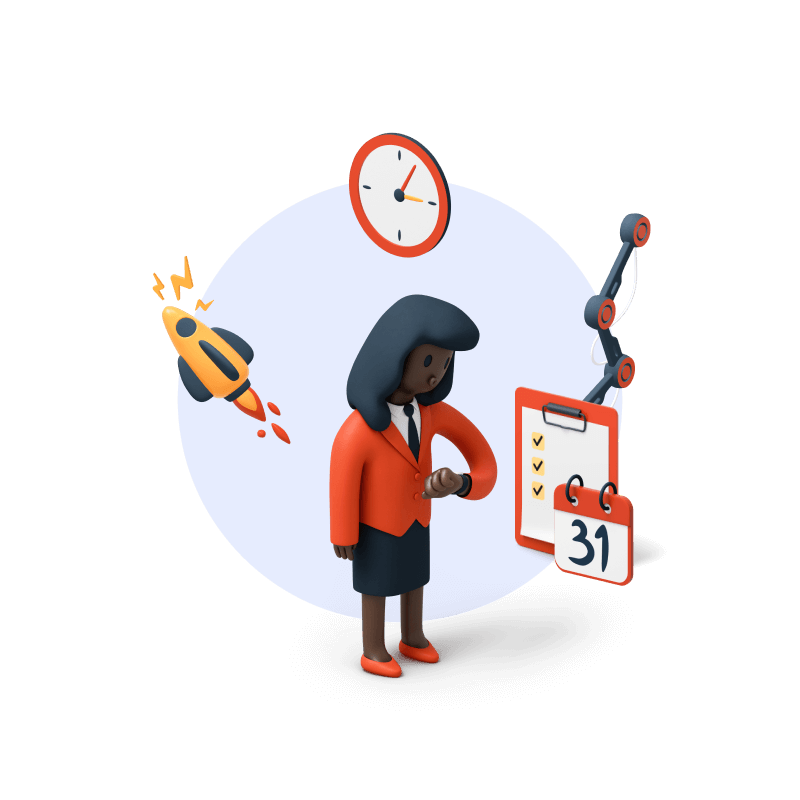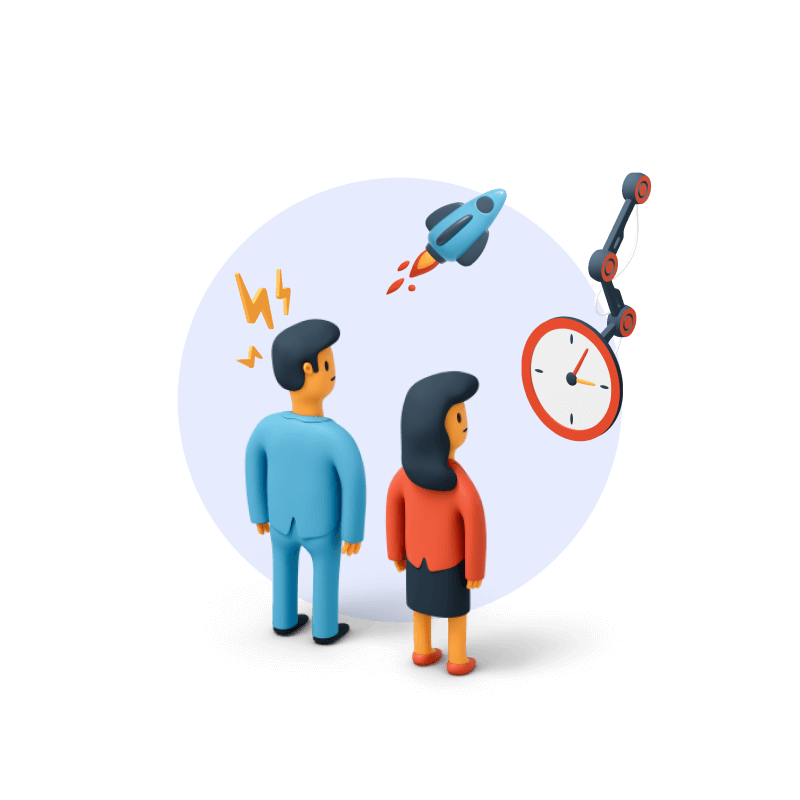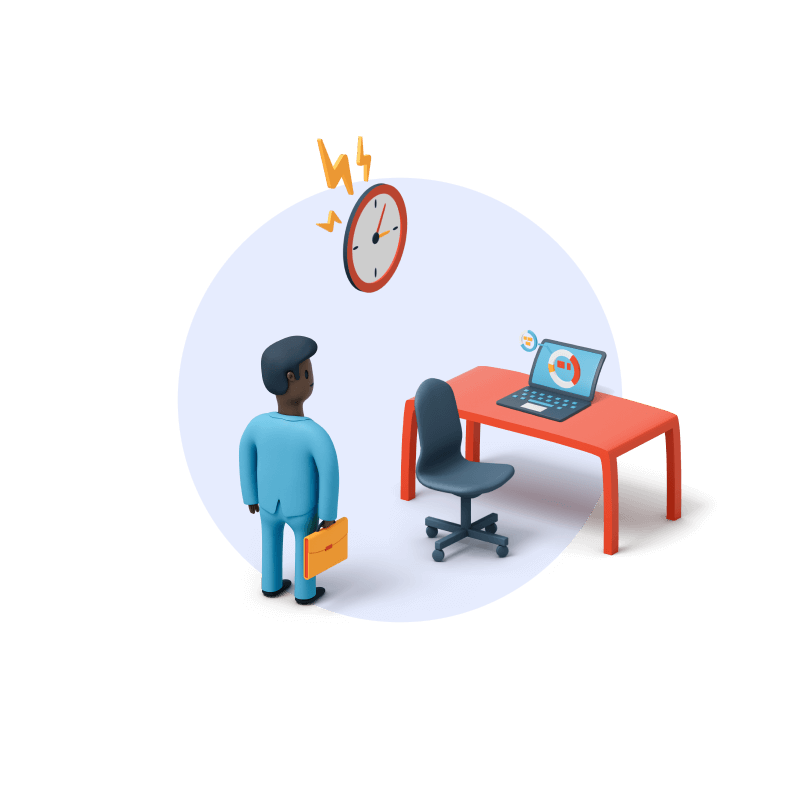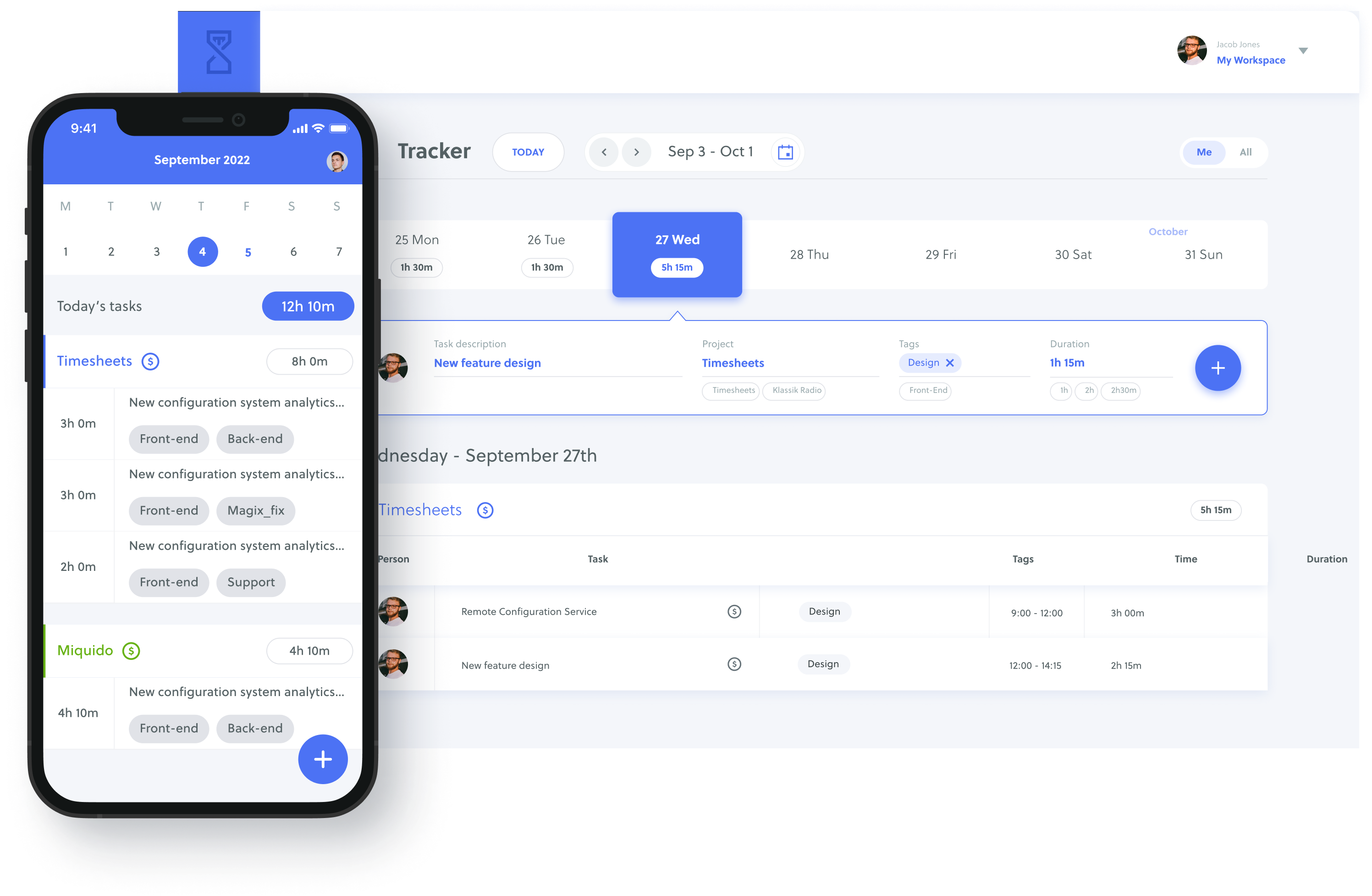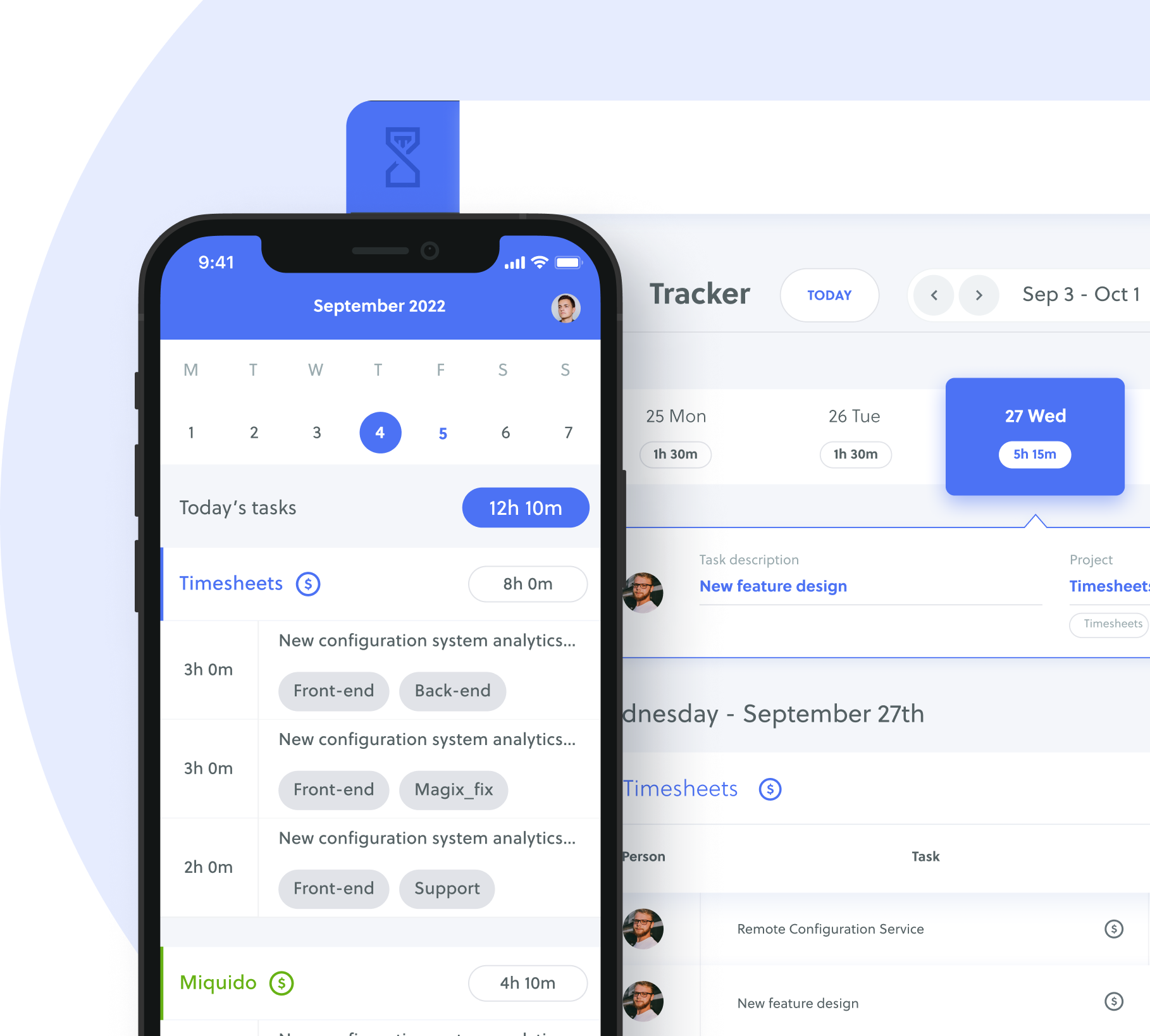If you work in manufacturing, healthcare, law enforcement agencies, or other industries running a 24/7 service, you’ve probably heard of the Panama Shift Schedule.
But what exactly is it, and how does the schedule work?
Employers look for ways to cut costs and increase productivity. One way they do this is by implementing a 3-shift work plan like the Panama Schedule to slash downtime.
To help you understand the advantages and disadvantages, schedule alternatives, and overtime associated with the Panama schedule, we created an in-depth guide below.
Table of Contents
What Is the Panama Shift Schedule, and How Does It Work?
The Panama shift schedule is a 2-2-3 work pattern adopted to cover a 24-hour operation. It’s mostly used by high-operating industries like manufacturing, medical and industrial companies that need to stay staffed 24/7.
How Does It Work?
The schedule involves four employee teams rotating through two or three different shifts with two or three days off.
Each team works for a set period on each shift before rotating to the next. The Panama shift plan provides complete coverage for a 24-hour business day while hiring fewer people.
Typically, each team works for 12 hours per day for three days (36 hours) on one shift, followed by two days off. After the two days off, the team works for three days on the next shift, followed by two days off again.
Workers repeat the shift pattern of working three days on and two days off for the scheduled duration.
However, the Panama work shift schedules can vary based on a company’s needs and industry.
Benefits and Drawbacks of the Panama Shift Schedule
While the Panama schedule provides employees with a flexible work-life balance and saves employers costs, it has a few drawbacks.
Here are some noteworthy benefits and drawbacks.
Benefits of the Panama Shift Pattern
Reduces employee absenteeism: After a 12-work-hour day stretch, you have enough days off to rest and recharge for the next work session.
Improves employees’ work-life balance: Since employees enjoy two to three consecutive days off, they have ample time to spend with family and friends and fulfill some of their personal dreams.
Reduces hiring cost: The Panama shift pattern allows employees to work for longer hours (12 hours); hence employers can afford to hire fewer workers. Therefore, employers may divert the hiring funds to other business areas.
Boosts productivity: Long shift schedules enable employees to focus on a specific task for longer, allowing them to complete the project before their shift ends.
Drawbacks of the Panama Shift Pattern
Health-related problems: The day and night alternation or working for long hours can cause burnout, increase stress levels, and disrupt one’s immune system and eating habits.
Worker fatigue: Working for longer hours consecutively and sleep deprivation cause fatigue. Consequently, fatigue links to automobile and work accidents and impaired cognition.
Disrupt sleep cycles: Switching between long day and night shifts may affect a worker’s alertness and promote unhealthy lifestyles. It may also cause workplace accidents and drowsy driving.
In addition, employees may experience other health effects like irritability, nervousness, anxiety, and depression with shift work.
While employees work around their 12-hour shifts, some unforeseen or urgent situations can warrant overtime.
Overtime With the Panama Shift Schedule
Overtime calculation and payment for the Panama schedule vary with organizations and local laws.
While the traditional work covers 8 hours per day, i.e., 40 hours per week, Panama shifts often run through an average of 42 hours per week or 12 hours per day.
Some regional laws require a maximum of 8 hours per day and 40 hours per week. So, if you run a business in such a region and adopt a 12-hour Panama shift, you’ll pay four hours as overtime.
Overtime rates also vary from one state to another. For example, companies running a 12-hour shift in Califonia will pay a double overtime rate instead of the standard 1.5 in some cases. This means employees will receive twice their regular pay rate.
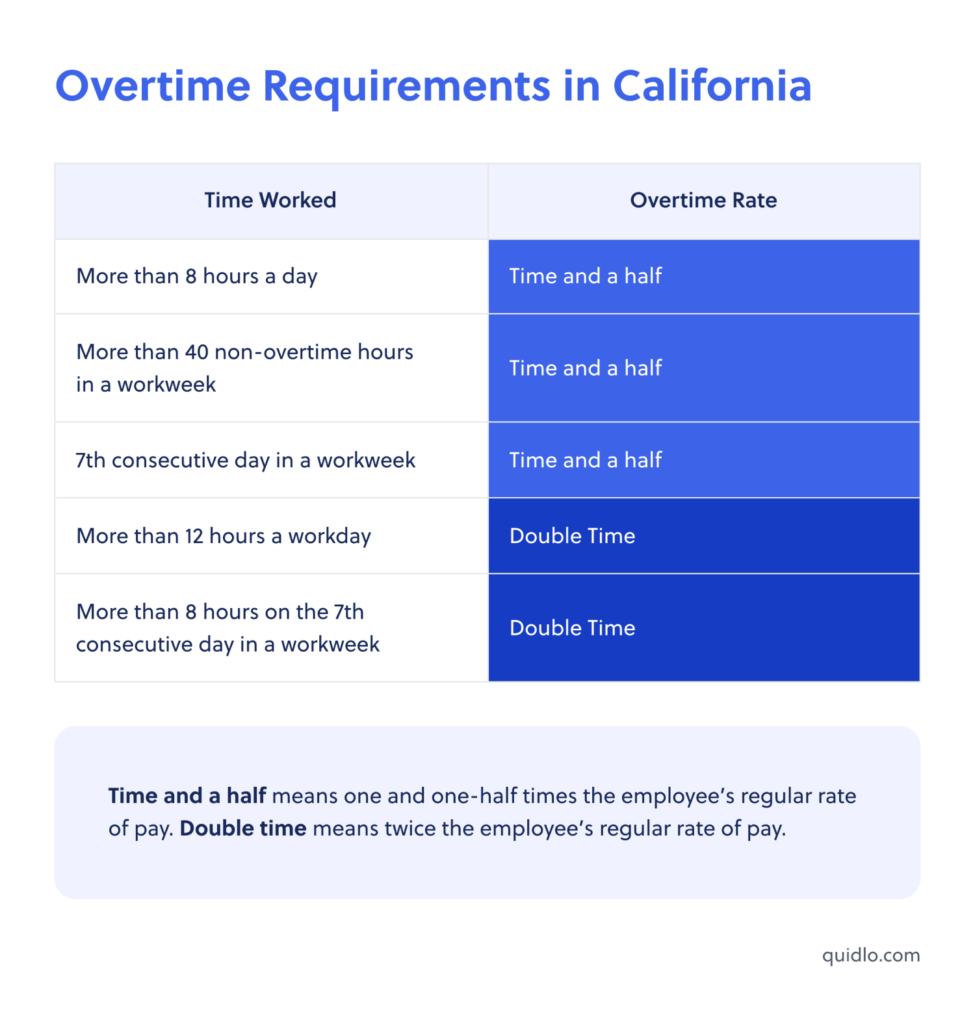
Put simply, you’ll need to study the labor laws in your region to understand how they may affect your organization financially if you decide to adopt the Panama 12-hour schedule.
What Industries Use the Panama Shift Schedule?
The Panama slow rotation plan is necessary for industries running day and night shifts. It’s commonly used in industries requiring 24/7 operation, such as:
Manufacturing industries: This shift pattern allows for continuous production without interruption, which is essential for many manufacturing operations.
Healthcare: Hospitals and other medical facilities often use the Panama shift schedule to ensure guaranteed coverage for patients, regardless of the time of day.
Public safety: Those in the emergency and fire services and police stations use this schedule to ensure availability for emergencies.
Transportation: The private and public transportation industries like trucking, shipping, and rail adopt the Panama schedule to ensure goods and products are transported all day.
Retail: Retail industries such as supermarkets, convenience stores, and gas stations use this shift work to ensure customers can access goods and services 24/7.
Media: Most mass media, like radio and TV stations and newspaper agencies, work non-stop to ensure constant research, news reporting, and entertainment.
The Panama schedule works well for these industries because it allows for continuous operation without needing to pay tons of overtime wages, which can be cost-prohibitive.
Additionally, the schedule allows for predictable employee rotations, boosting employee morale and scheduling.
Panama Shift Schedule Examples
The Panama (2-2-3) shift schedule uses a slow rotation system with four teams around two 12-hour shifts over the course of 28 days.
For example, a typical Panama Shift schedule may follow this pattern:
2 days on (night or day), 2 days off (out of office), 3 days on. Then 2 days off, 2 days on (night or day), and 3 days off.
Each team runs the same shift (night or day) within 4 weeks (28 days) and then rotates to the other shift within the next 4 weeks. The sequence repeats after 8 weeks (56 days).
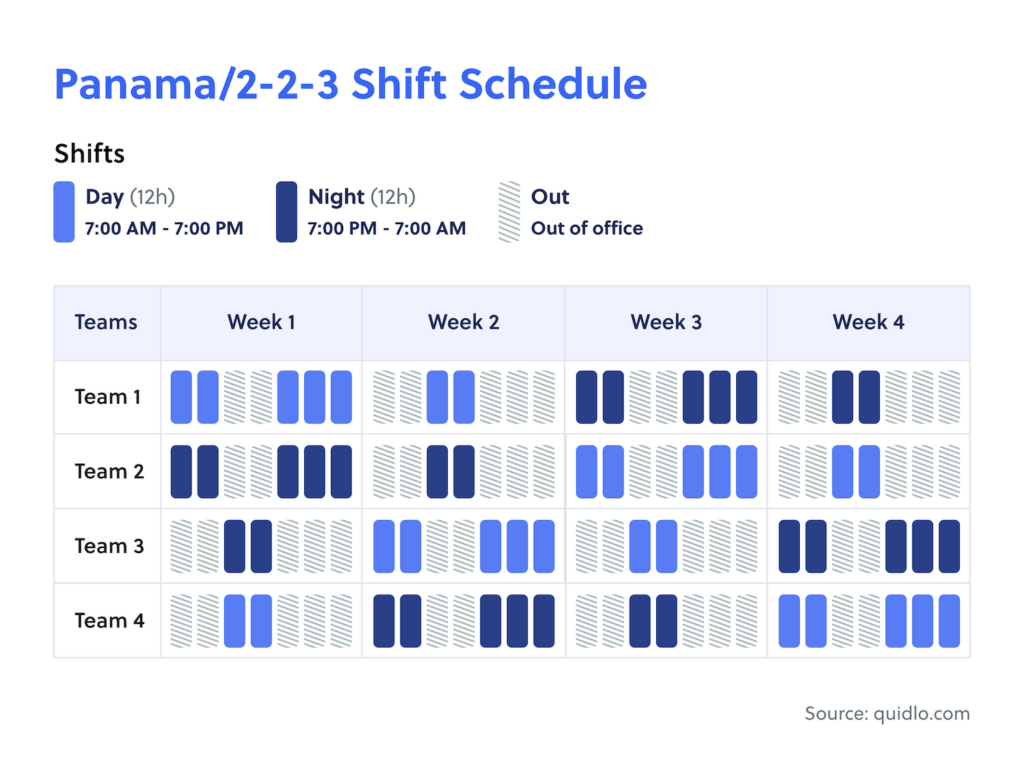
The above schedule chart shows the days on and off for each team in a repeat cycle (28 days). Although day 1 often begins on a Monday, it’s not a prerequisite. After the first cycle ends, the sequence repeats for the next one.
The light and dark blue blocks represent day and night work shifts, respectively, while the patterned blocks show days off. Furthermore, the team column lists the four-employee groups required in the plan.
You can change the shift start and end times in the image to fit your operational requirements.
Things to Consider When Making a Panama Shift Schedule
Don’t adopt the Panama slow rotation pattern without proper background checks and decisions. You could endanger your employees and disrupt business operations.
For efficiency with the 2-2-3 rotating shift, consider the factors below.
Employee preferences
When creating a Panama shift schedule, consider your employees’ preferences. This includes preferred days off, shift lengths, and start times.
First, assign early morning shifts to the early risers and night shifts to night crawlers to enhance productivity.
While adjusting Panama scheduling won’t favor every staff, the management should allow them to switch shifts with colleagues for flexibility.
Coverage needs and rotations
The schedule design should alternate employees fairly among rotating shifts to avoid burnout and constantly repeating the same shift. In addition, it should ensure adequate coverage during all operating hours, including peak times and night shifts.
Staffing levels
The Panama shift schedule should meet the staffing needs of the organization, considering the expected workload, frequent breaks, employee availability, and budget constraints.
Overtime costs
The 2-2-3 shift schedule design minimizes overtime costs. However, it’s crucial to consider the potential costs of overtime during emergencies or unexpected changes in the workload.
Legal requirements
The schedule should comply with relevant labor laws, including those governing rest breaks, minimum wage, and overtime pay.
Training
Factor in the need for training and cross-training employees, especially the new ones, to ensure they can perform their duties effectively.
Communication
To prepare employees’ expectations, communicate the approved schedule (new or modified) in advance.
Lighting
Workplace lighting influences employees’ productivity and activeness. While dim light promotes sleepiness, over-illumination results in headaches and eye problems.
Researchers at the University of Bergen discovered cold white light and high light levels could enhance employees’ concentration and curtail drowsiness.
Therefore, adopt a perfect balance of lighting, particularly for night shifts.
Productive breaks
Since workplace napping is increasing in popularity, managers should set up a “napping area.”
Facebook, Nike, Google, Cisco, and Ben and Jerry’s, encourage rest with nap rooms. Employees can increase their efficiency and productivity with 15 to 20 minutes of power naps at work, especially at night.
What Are Other Alternatives to the Panama Schedule?
Besides Panama’s rotating schedule, you can find other shift rotation types that work for your company. These shift schedule alternatives work for the industries listed above. They include:
Pitman Schedule
This slow-rotating shift pattern closely resembles the Panama shift scheduling. However, the Pitman schedule uses the 2-3-2 pattern repeats. Here, employees have two off days, three work days, then two off days.
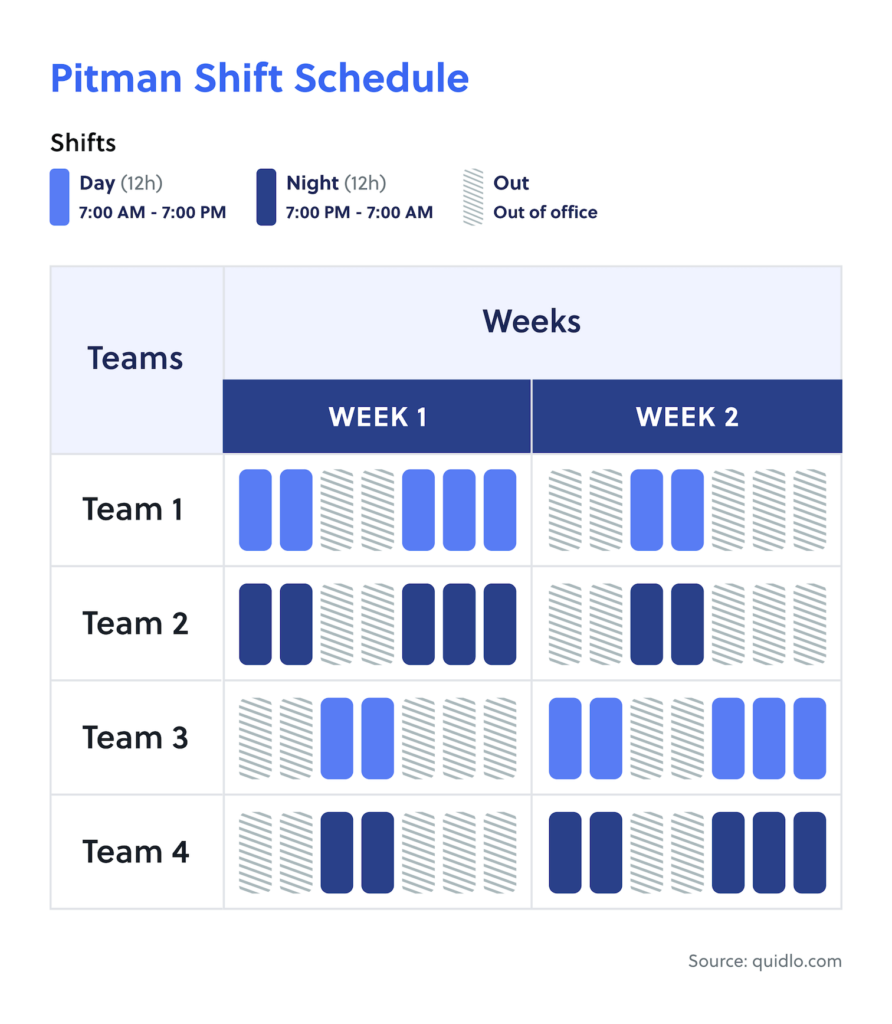
The Pitman work schedule comes in two variations – fixed and rotating.
Fixed work schedule
Pitman’s fixed work schedule follows a 2-3-2 pattern, in which all four teams follow the same schedule. Two teams work during the day and the other two work at night.
A person working this fixed schedule would expect to work two business days, take two off, and work three business days, take two off. Additionally, they can take three days off and work two.
Rotating work schedule
Often called the 2-2 3-2 2-3 schedule, the rotating Pitman shift uses four teams, where one team works the day shift during a 14-day cycle and the night shift in the next cycle.
DuPont Schedule
The DuPont schedule is a 12-hour rotating shift schedule over a four-week cycle with a fairly complex approach.
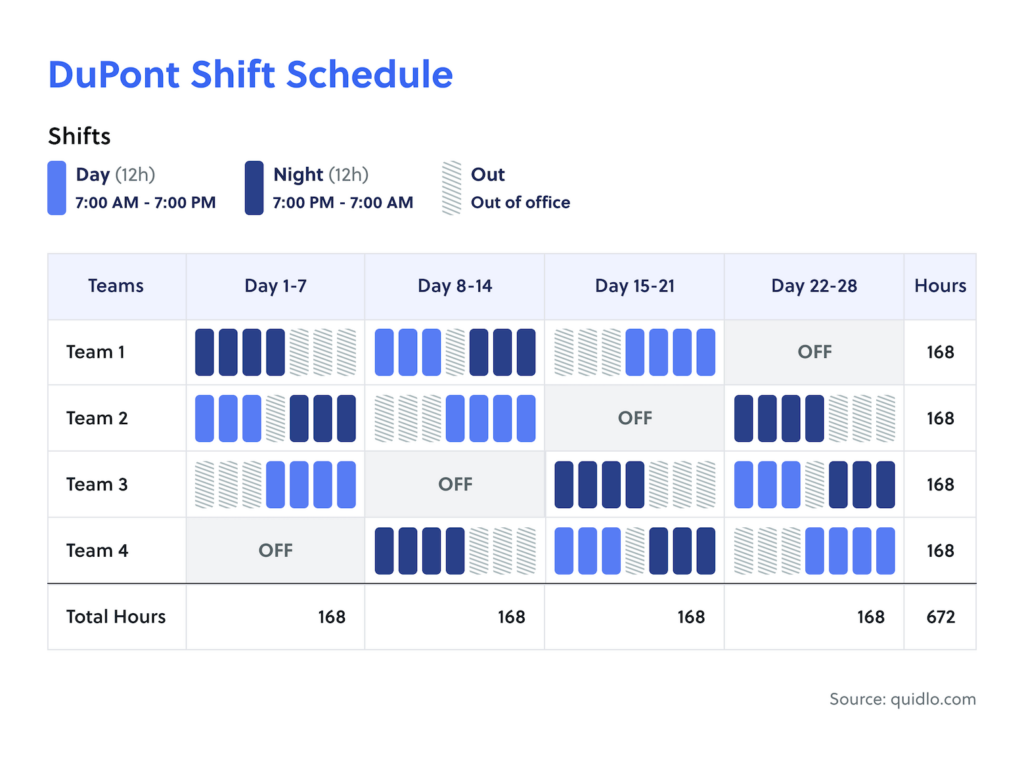
It may include the following rotations;
Week 1: Four consecutive night shifts, then three days off.
Week 2: Three-day shifts, one day off, then three-night shifts.
Week 3: Three days off, then four consecutive day shifts.
Week 4: Get seven consecutive days off.
With four teams, each will progress through this four-shift schedule before the four-weeks cycle ends.
DDNNOO Schedule
The DDNNOO (day and night shifts) schedule uses three teams.
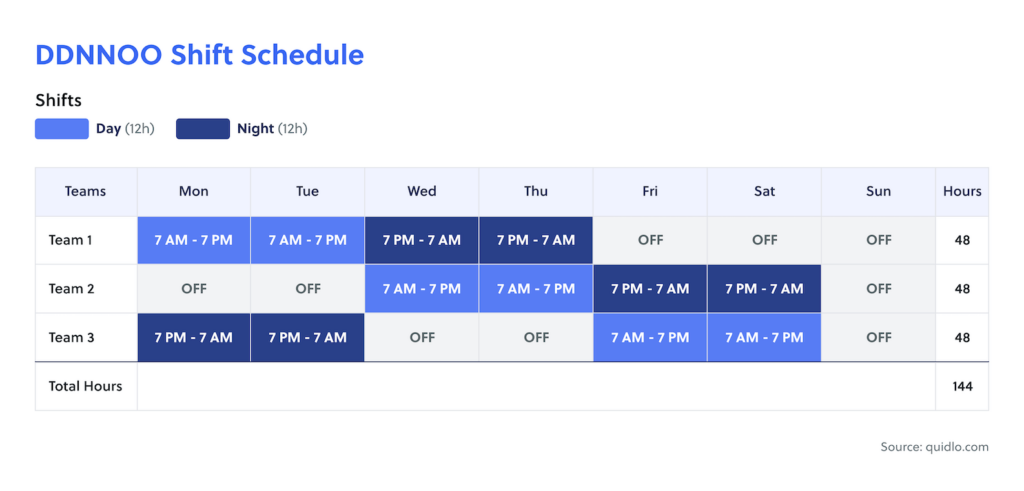
Each team rotates two work days, two-night shifts, and two days off to achieve 24/7 coverage. This fast rotation work pattern covers 12 hours per day in a six-day cycle.
4/10 Work Schedule
Those in the hospitality and retail industries work four 10-hour shift patterns and have three rest days. This 4/10 work schedule promotes rest and employee productivity.
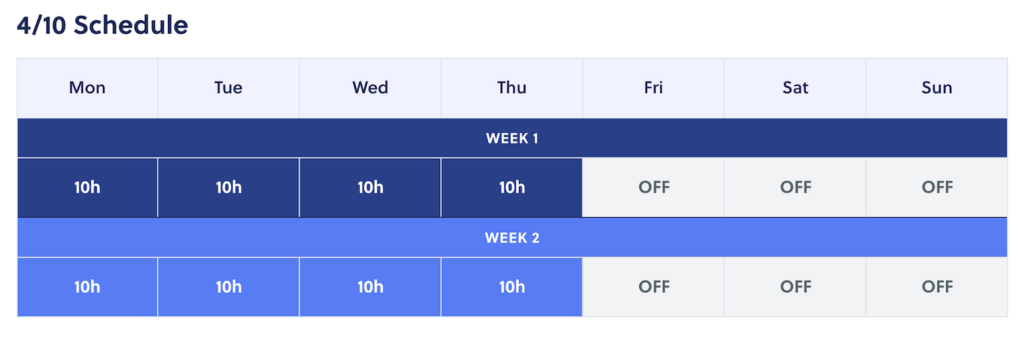
All the above-mentioned shift schedules have their advantages and disadvantages, and different industries adopt them depending on the work nature and organization size. Therefore, consider the needs of the employees and the organization before planning shifts.
Panama Shift Schedule: Wrap-Up
Every job industry has different work scheduling, including the 9/80 and 80-hour arrangements. Among the shift-work variations, the Panama or 2-2-3 work schedule is the top option in ensuring 24/7 coverage in production or service.
Businesses and their employees alike benefit from the 12-hour shifts through better productivity, work-life balance, and more free time.
However, company decision-makers should consider several factors to ensure the best experience with the Panama shift schedule. You may also consider the other shift alternatives to find one that best suits your business needs.

